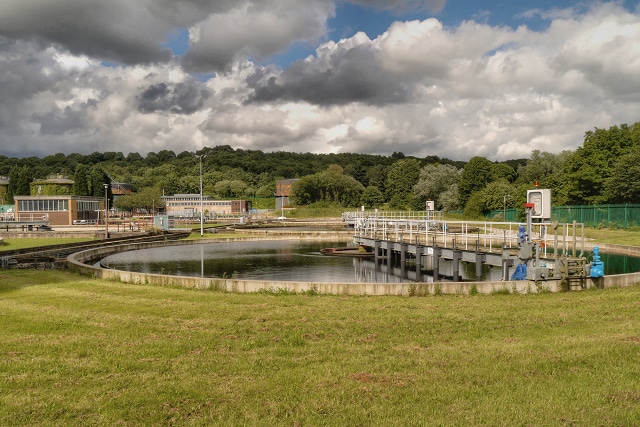Image via Geograph
Clarifying is a crucial part of the wastewater treatment process, but what type of clarifier is best for your particular facility? Let’s take a look at the process and examine some of the different types of setup.
Primary and secondary clarifying
Both the primary and secondary phases of the process rely on clarifier equipment to get the job done in the right way, but each phase has its own objective.
Primary
The first stage in the process, primary clarification is the removal of physical solids and other large particles from the wastewater flow. After these solids are removed, the wastewater is ready to move to the next stage of processing.
Secondary
During secondary clarifying, microbes, germs, and smaller particles are removed from the wastewater, usually using chemicals and other treatments that make the water safer. If there are still large particles or solids within the wastewater, this is an indication that the primary phase is not operating effectively.
Key types of clarifiers
There are three key types of clarifiers (although, as we will note, clarifiers deployed in the field may be hybrids of more than one type). Read on to discover more about each.
Bridge support clarifier
In a bridge-supported wastewater clarifier, the sludge removal system is mounted beneath a bridge-like structure, which spans from one side of the tank to the other. This is suitable for tanks of up to 45 inches in diameter — any larger than this, and it becomes uneconomical to install a bridge that is robust enough to do the job safely and securely.
Column support clarifier
This type of clarifier is supported by a column, also known as a pier, mounted at the bottom of the center of the tank. Column-supported clarifiers are suitable for larger tanks, often up to 250 inches in diameter.
A note on bridge support and column support clarifiers
While bridge and column support clarifiers are often spoken of as being two distinct categories, both clarifiers in fact often share elements of both constructions. For example, for practical reasons, column-supported clarifiers may have a bridge across the top of the tank for inspection and traffic purposes, even if this bridge does not actively support the clarifier unit.
Traction clarifier
Traction clarifiers are mounted on a central column in the same way as a column support clarifier, but this column is designed to pivot. A gearbox and slip ring mounted within this central column provides the torque force, rotating the column and moving the clarifier arm through the tank. The clarifier arm extends across the full radius of the tank (half of the diameter) and is supported by a traction trolley at the tank’s perimeter.
This type of clarifier is lauded for its high efficiency, and the mechanism can be retroactively installed into existing tanks.
Clarifier tank structures
While we have already covered the main types of wastewater clarifiers, there is something else left to discuss — the structure of the clarifier tank itself. These structures come in two basic types: pre-fab and concrete cylinder.
Pre-fab
The pre-fab tank is relatively quick and easy to install as it is simply a pre-fabricated steel structure that can be shipped to the facility site and erected.
Concrete cylinder
A concrete cylinder is a more permanent structure and may be more robust and durable. However, the costs of installation and maintenance may be higher.
Additional resources:
https://www.biologicalwasteexpert.com/blog/why-are-solids-are-floating-on-my-secondary-clarifier
https://spsengineering.com/primary-secondary-clarifiers/
https://savi-water.com/en-GB/SAVI/Product/PTP/peripheral-traction-clarifier
https://savi-water.com/en-GB/SAVI/Product/PTC/Central-traction-clarifier
